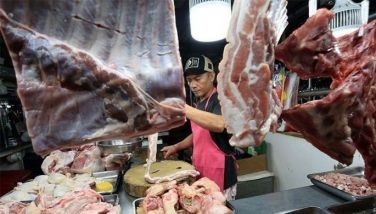Biotech crops shrinking global pesticide mart
LOS BAÑOS, Laguna ,Philippines – The global crop protection market is shrinking.
This can be attributed to, among other things, the “biotechnology revolution” sweeping the international agriculture sector.
The “revolution” is characterized by the development of biotechnology or genetically modified/engineered (GM/GE) plants with built-in resistance to pests attacking cereal and vegetable crops.
With such resistance, dependence on toxic chemicals used to protect food plants from pests has been decreasing, the New York (USA)-based International Service for the Acquisition of Agri-biotech Applications (ISAAA) reported.
The world’s crop protection market is dominated by herbicides, insecticides, and fungicides, noted ISAAA, a not-for-profit entity with a global network of biotechnology centers, one of them based in Los Baños, that help alleviate hunger and poverty by sharing knowledge and crop biotechnology applications.
Latest available records sourced by ISAAA from Cropnosis Agrochemical Service showed that the global herbicides market in 2009 was $17.87 billion, with the industrial countries (North America, West and East Europe, and Japan) accounting for $11.69 billion and the developing countries $6.17 billion.
The insecticides market in 2009 totaled $10.9 billion, which is half a billion dollars less than the $10.65 billion in 2009. The fungicides market was $10.24 billion in 2009, or $400 million less than that of 2009.
The global crop protection market (which includes biotechnology and others) in 2009 was $50.77 billion, compared to the $53.03 billion in 2008.
The shrinkage in the crop protection market is reflected in a report titled “Global Status of Commercialized Biotech/GM Crops: 2010” presented by Dr. Clive James, ISAAA founder and current chairman, at a science forum held recently at the Dusit Thani Hotel in Makati City.
ISAAA organized the 2011 seminar with the Los Baños-based Southeast Asian Ministers of Education Organization-Regional Center for Graduate Study and Research in Agriculture (SEAMEO SEARCA) and National Academy of Science and Technology (NAST).
Other speakers at the seminar and media forum were SEARCA director Dr. Gil C. Saguiguit Jr., successful biotech corn farmer Isidro Acosta from Isabela, ISAAA global coordinator Dr. Rand Hautea, Dr. Ruben Villareal of NAST, and Dr. Rhodora Aldemita of ISAAA.
2010 figures are not yet available, but it is expected that the anti-plant pest chemicals market will further shrink in view of continued shift from planting of conventional to GM crops.
Take the cast of Bt (Bacillus thuringiensis) corn.
Bt is a bacterium that naturally occurs in soil. Through genetic engineering, a specific gene of Bt has been inserted in a corn variety. The Bt corn produces its natural pesticide against pests, notably the Asiatic corn borer, the most destructive corn pest in the Philippines and other parts of Asia.
Dr. James reported that the $11.2 billion biotechnology crop market in 2010 comprised mainly of biotech maize ($5.8 billion), soybean ($4.9 billion), cotton ($1.1 billion), and canola ($300,000).
Other GM crops planted in 148 million hectares in 29 countries in 2010 were wheat, sugarcane, sugarbeet, papaya, squash, alfalfa, and poplar.
In the case of the Philippines, Dr. James said: “The benefits of biotech maize to Filipino farmers’ livelihood, income, the environment, and health have been well-studied and documented.”
In 2010, about 270,000 farmers planted Bt corn in about 541,000 ha.
These farmers spent much less or virtually none on pesticides to control corn pests, as exemplified by Acosta, a retired government bank official and the first to plant Bt corn in Isabela.
Acosta said that the GM crop eliminated costs and spraying time, exposure to harmful chemicals, weeding, and potential health risks owing to use and handling of insecticides.
On the other hand, the population of “farmer-friendly” insects (spiders, beetles, etc.) has been increasing owing to nonuse of chemicals.
Acosta also attested that his yield dramatically increased from 3-3.5 tons per hectare (using the conventional corn hybrid) to 6-7 t/ha (with Bt corn). His usual income of P25,000-P30,000/ha doubled.
Dr. James summed up that studies so far done in the country “consistently confirmed the positive impact of Bt maize on small and resource-poor farmers and maize producers in the Philippines.”
- Latest
- Trending


























